|
<< Click to Display Table of Contents >> Data Entry |
  
|
|
<< Click to Display Table of Contents >> Data Entry |
  
|
Open the Examples project and open Case 10.
General Tab
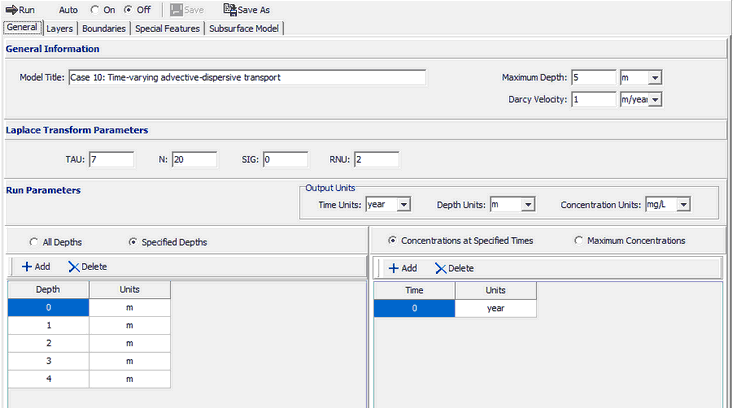
In the General tab the Darcy velocity can be specified. If the Time-varying Properties special feature is used, any Darcy velocity entered will be ignored. The concentrations can either be calculated at specified times or the time of the maximum concentration can be found. When the time-varying properties special feature is used the times to calculate the concentrations are specified in the Time-Varying Properties. In this example the concentrations will be calculated at 5 depths: 0, 1, 2, 3, and 4 m
Layers Tab
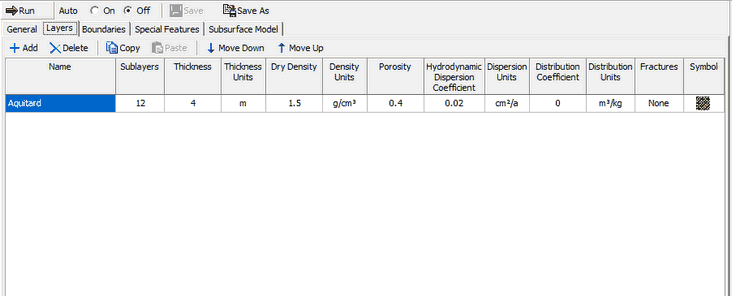
The layer data for the layer can be specified on the Layers tab.
Boundaries Tab
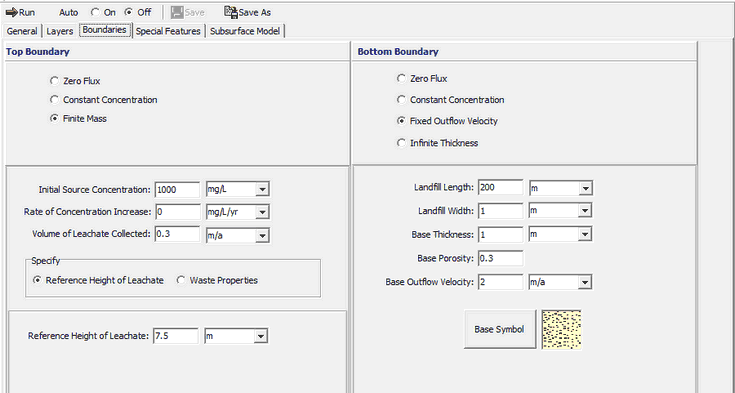
In this example, the top boundary has a finite mass and the bottom boundary is represented by a fixed outflow aquifer. If the Time-varying Properties special feature is selected, any parameters entered for the Finite Mass will be ignored and the source parameters will be entered in the Time-Varying Properties sub-tab of the Special Features tab.
Special Features
The time-varying properties for this example is specified using the Special Features tab.
Time Varying Properties
To specify the time-varying properties, check the Time-Varying Properties box on the Special Features tab. The Time-Varying Data sub-tab is used to specify the time varying properties. In this example there are 3 time periods viz. 0 to 20 years, 20 to 30 years, and 30 to 130 years.
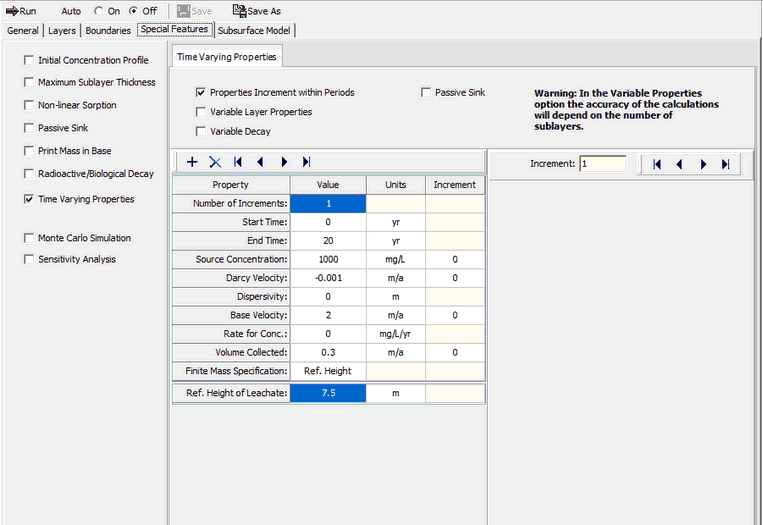
In the first time period, specifying only one time increment means that the concentrations will only be calculated at the end time (i.e., 20 years). A negative Darcy velocity indicates the flow is upwards.Since the first time period corresponds to an operating leachate collection system and there is no additional mass entering the landfill; there is no increase in source concentration, Darcy velocity, volume of leachate collected, or base velocity
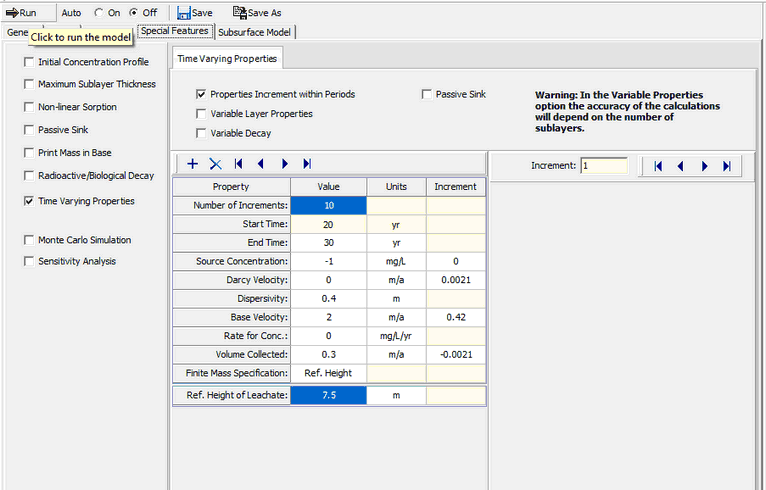
The data for time period two can be specified by pressing the Next button. This time period is from 20 to 30 years.Between the years 20 and 30 the velocities increase linearly with time, this will be approximated by a series of incremental increase at 1 year intervals. Thus there are 10 increments starting at year 21 and ending at year 30. Specifying the source concentration as -1 causes the calculated concentration at the end of the previous period to be used as the concentration at the beginning of this period.
The Darcy velocity and dispersivity are the values at the beginning of the time period. When operation of the leachate collection system is terminated the leachate mound begins to rise causing the Darcy velocity to reverse direction and become positive. A positive Darcy velocity results in the dispersivity becoming 0.4.
The increment in Darcy velocity represents the change for each one year increment. Assuming the infiltration through the cover is constant the increment in the volume of leachate collected will be equal and opposite to the increment in the Darcy velocity. The increment in the base velocity is equal to the increment in the Darcy velocity multiplied by the length of the landfill (i.e., 0.0021 * 200 = 0.42 m/a).
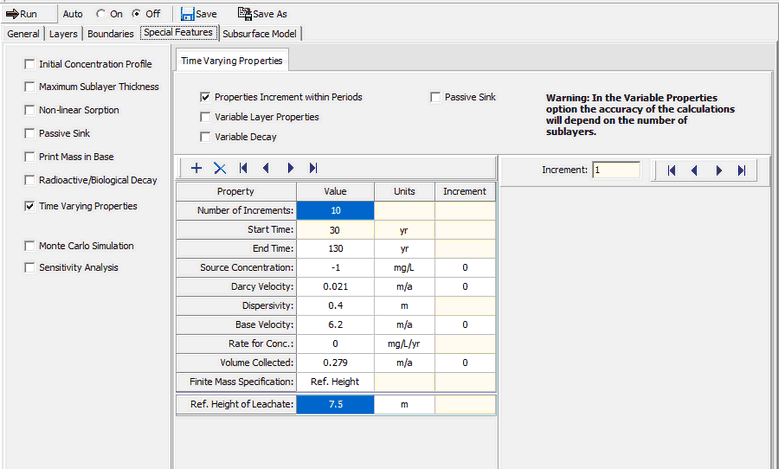
The data for time period three can be entered by clicking on the Next button, this time period is from 30 to 130 years. During the 100 years between 30 and 130 years the velocities remain constant. By specifying 10 increments the concentrations will be calculated and listed every 10 years during this period. The Darcy velocity is the resulting velocity from the build-up of leachate after the failure of the leachate collection system.
Since the leachate collection has completely failed by the start of this time period and the leachate mound has fully developed, there is no further increase in the velocities. Note that there will still be some leachate collected by the toe drains, which are assumed to be functioning even though the leachate collection system has failed.
The volume of leachate collected by the toe drains is equal to the infiltration through the cover minus the downward Darcy velocity (i.e., 0.3 - 0.021 = 0.279 m/a). And the base velocity is equal to the inflow plus the Darcy velocity times the landfill length (i.e., 2 + 200*0.021 = 6.2 m/a).